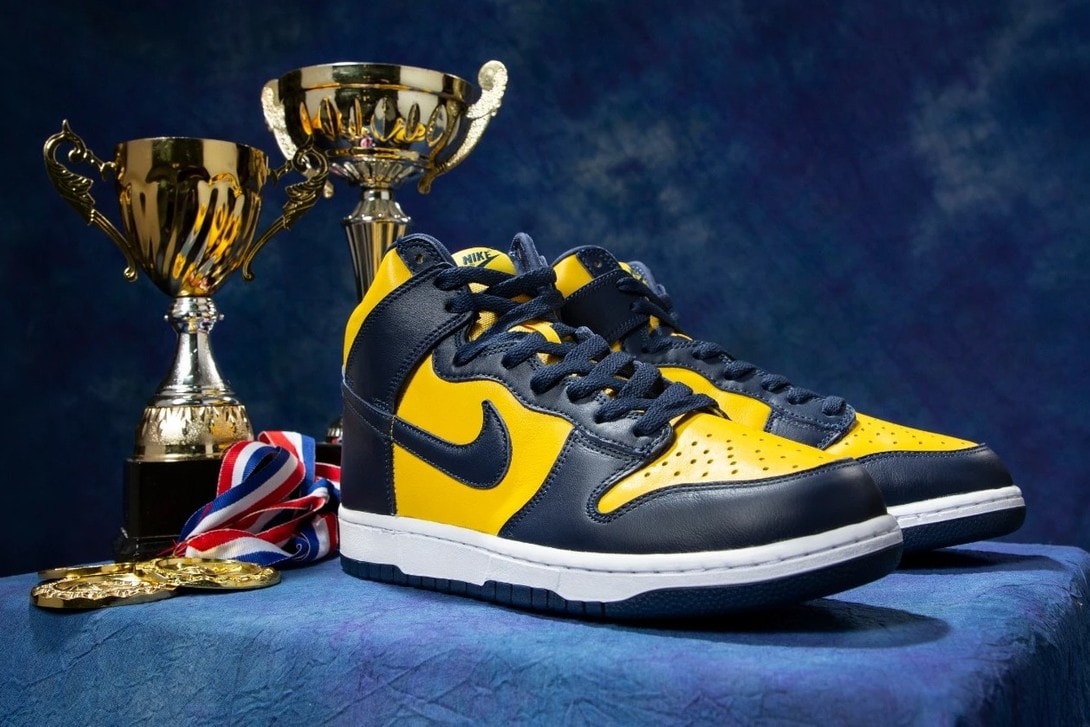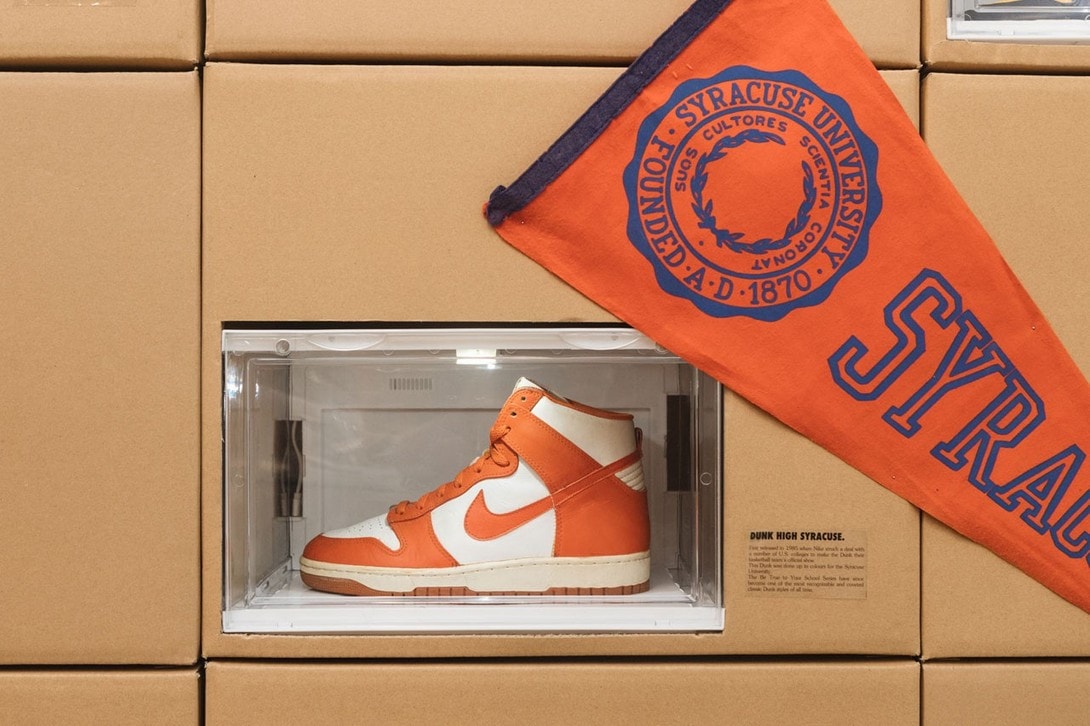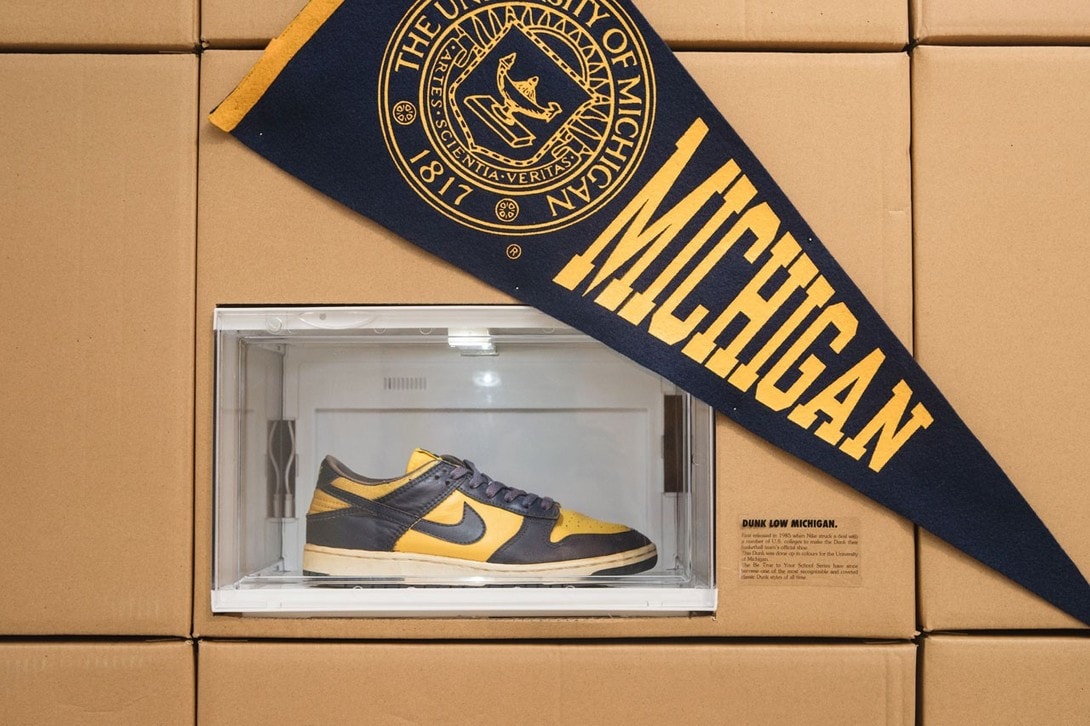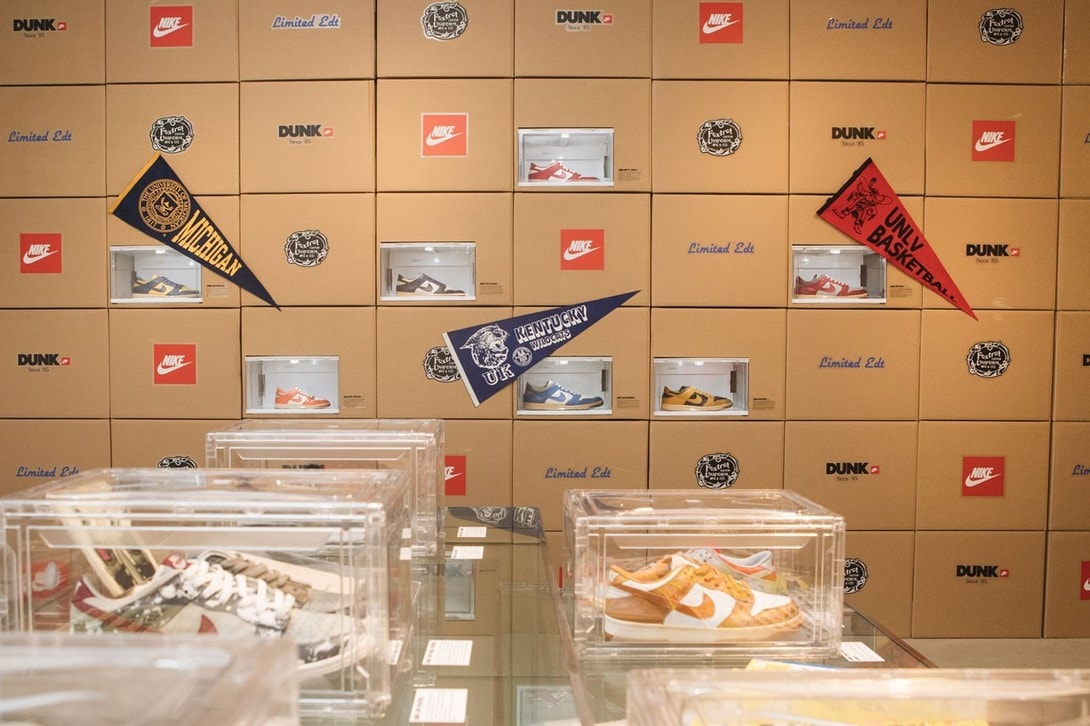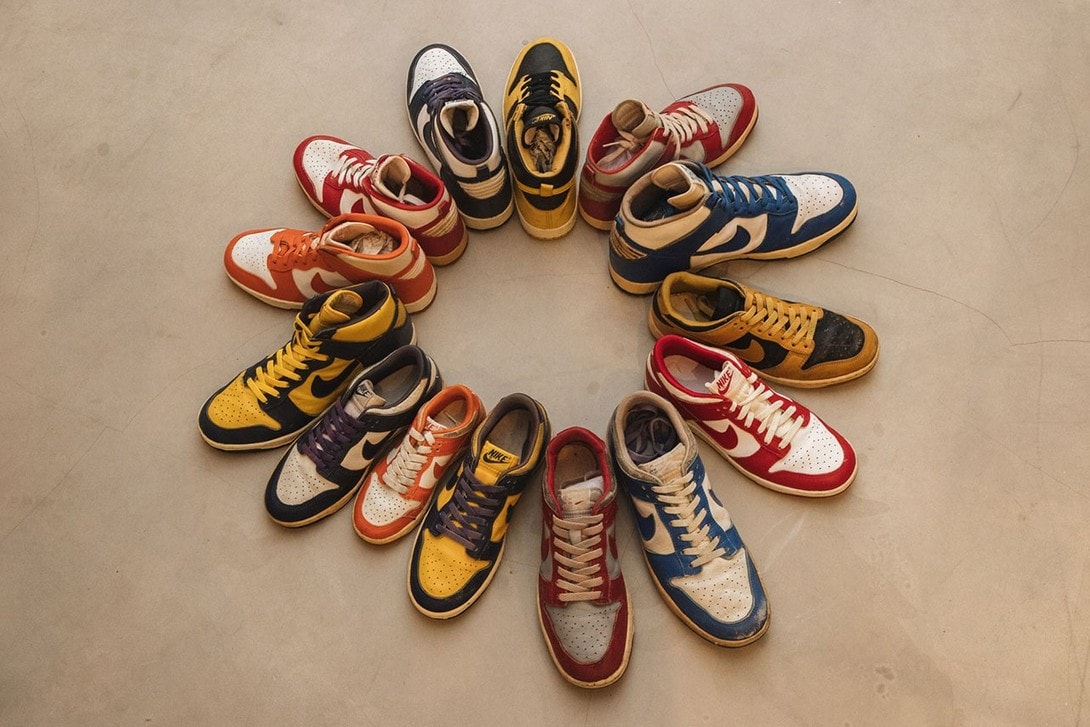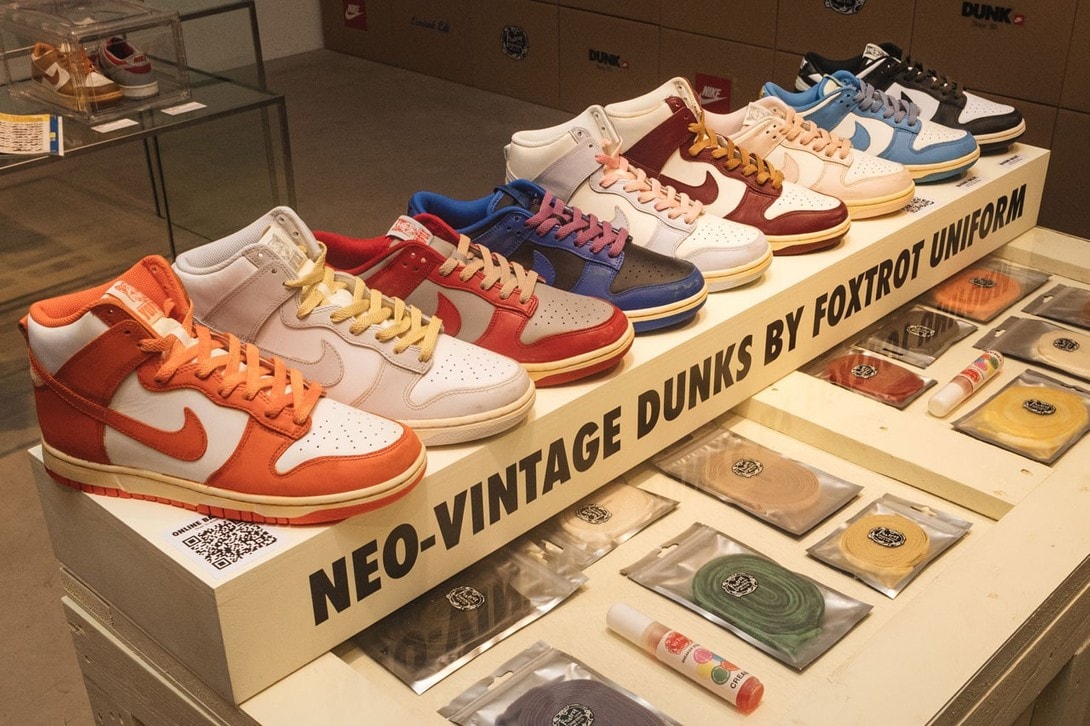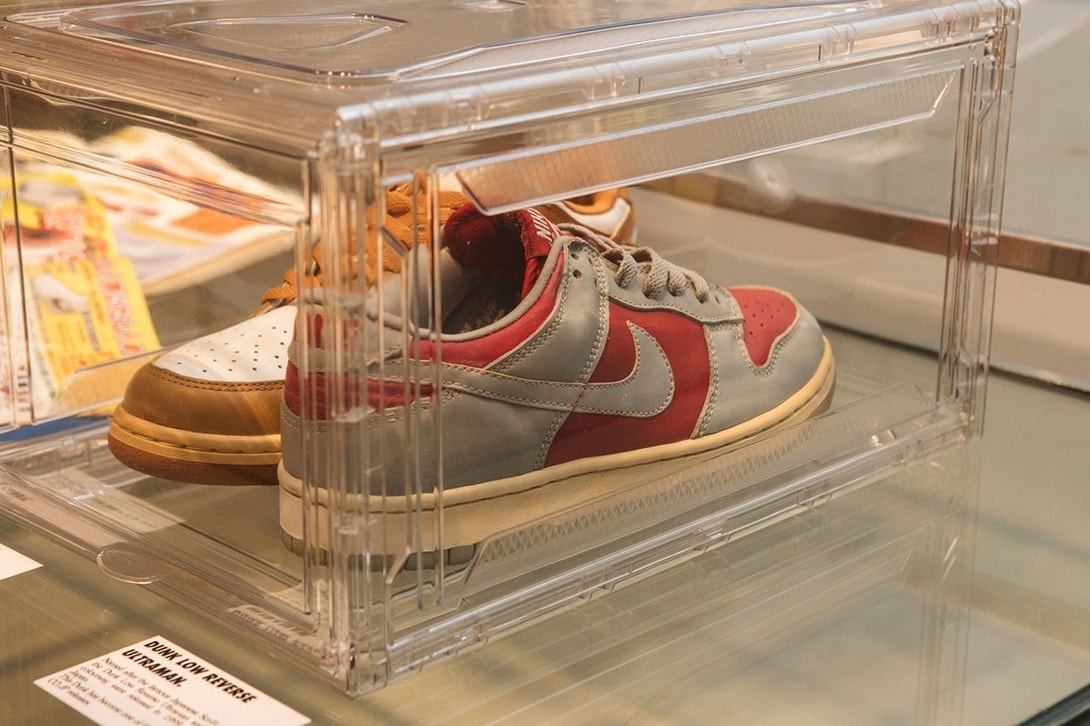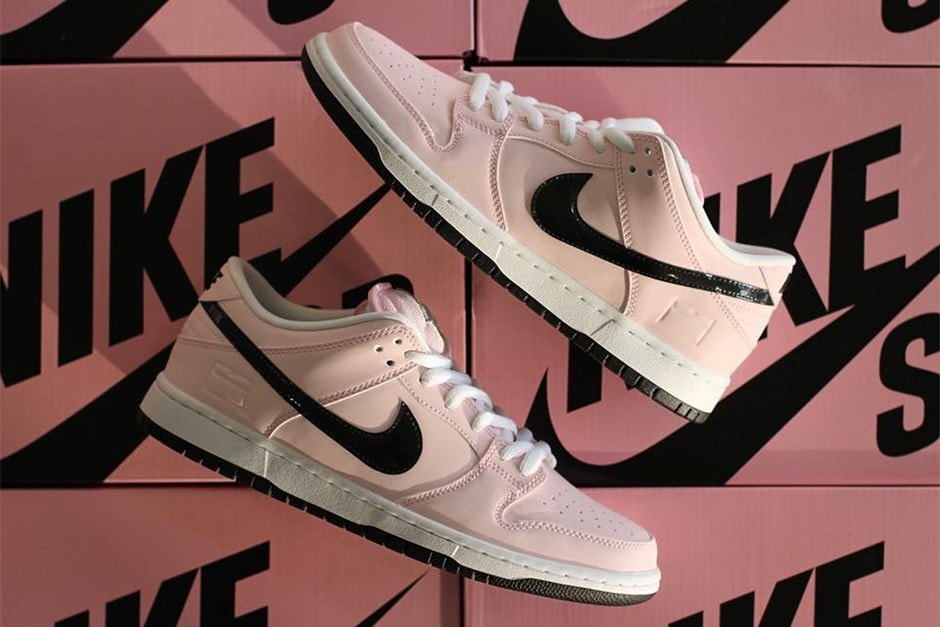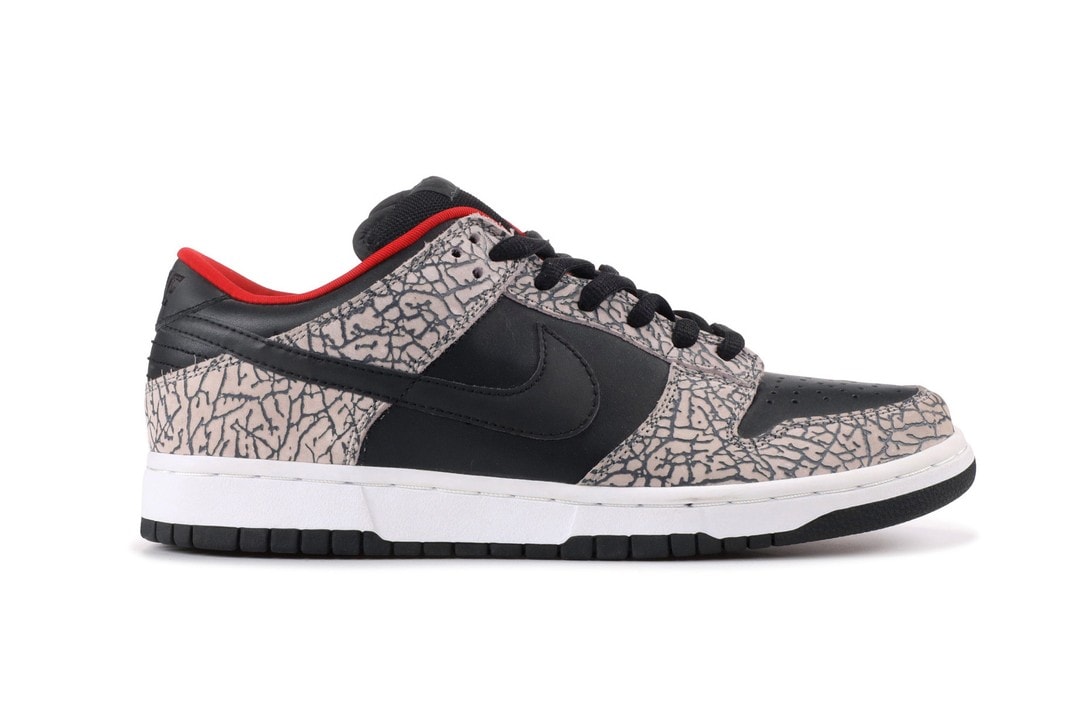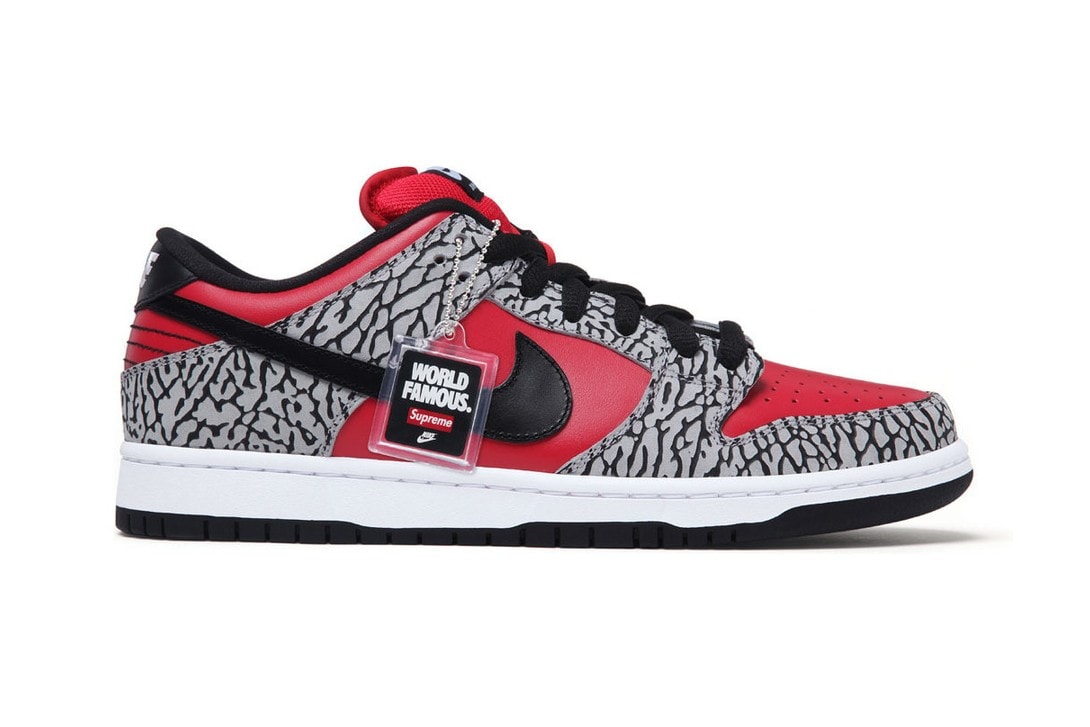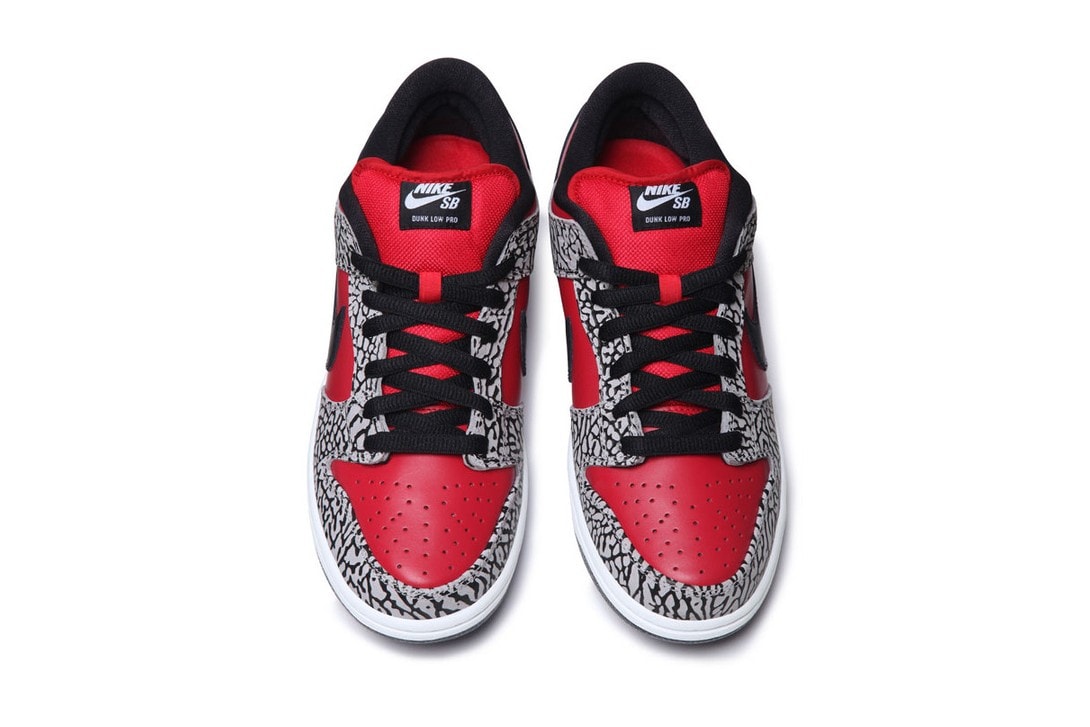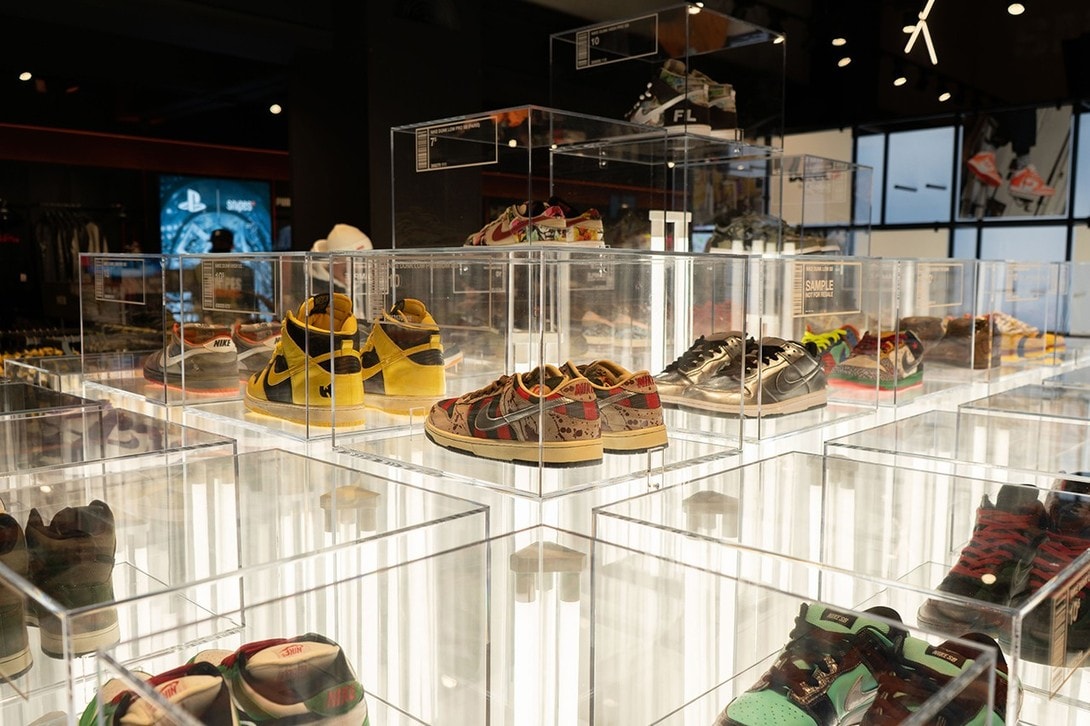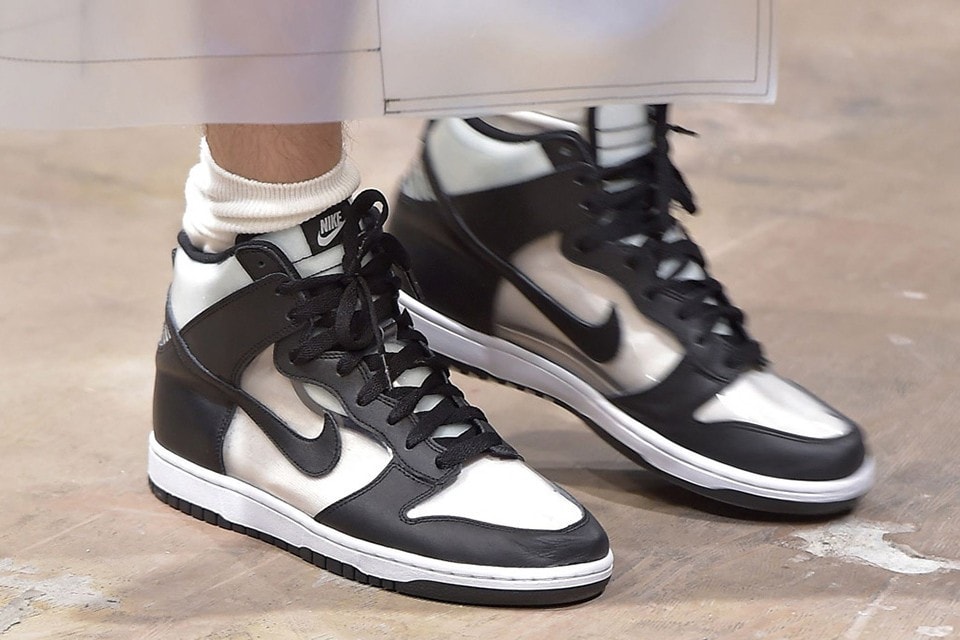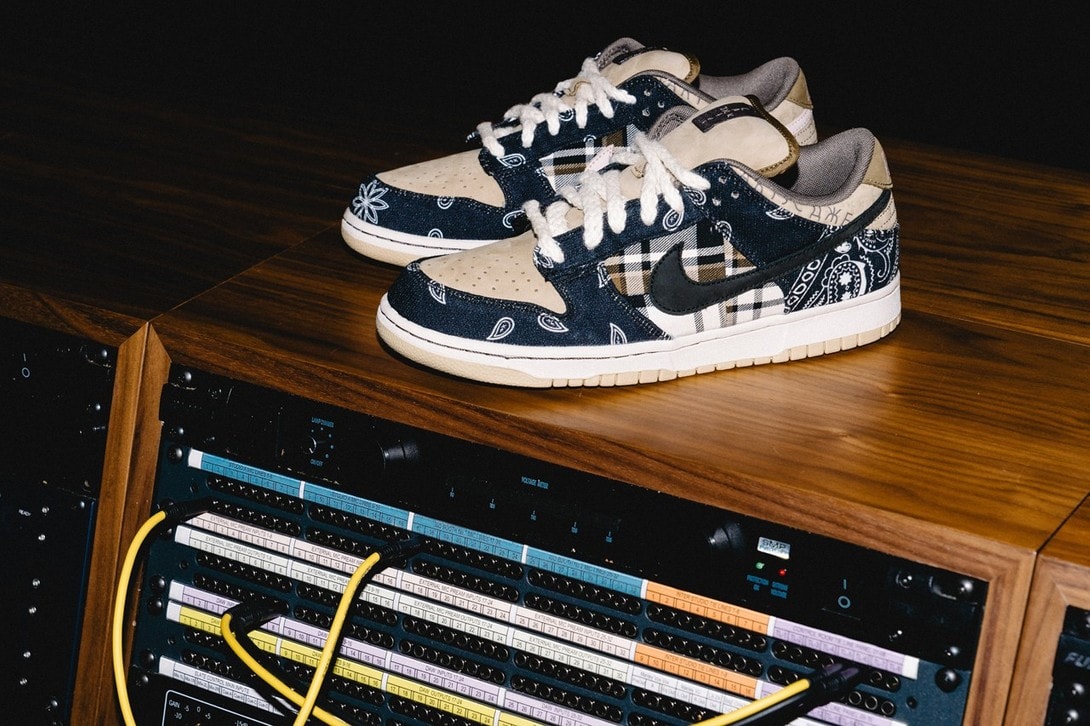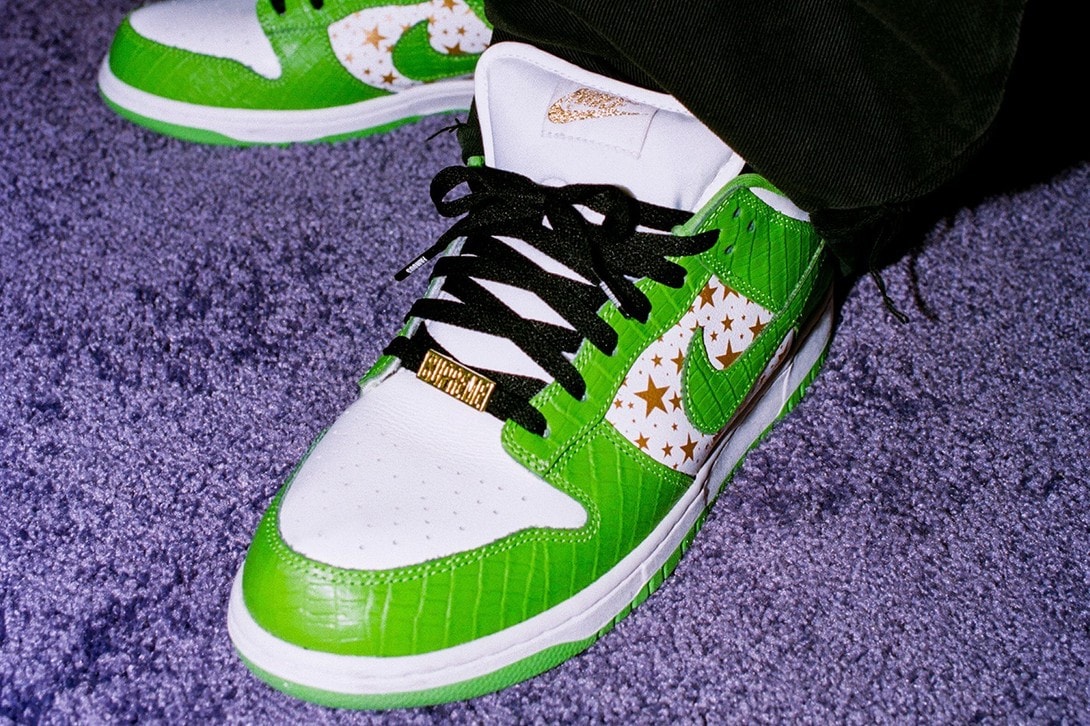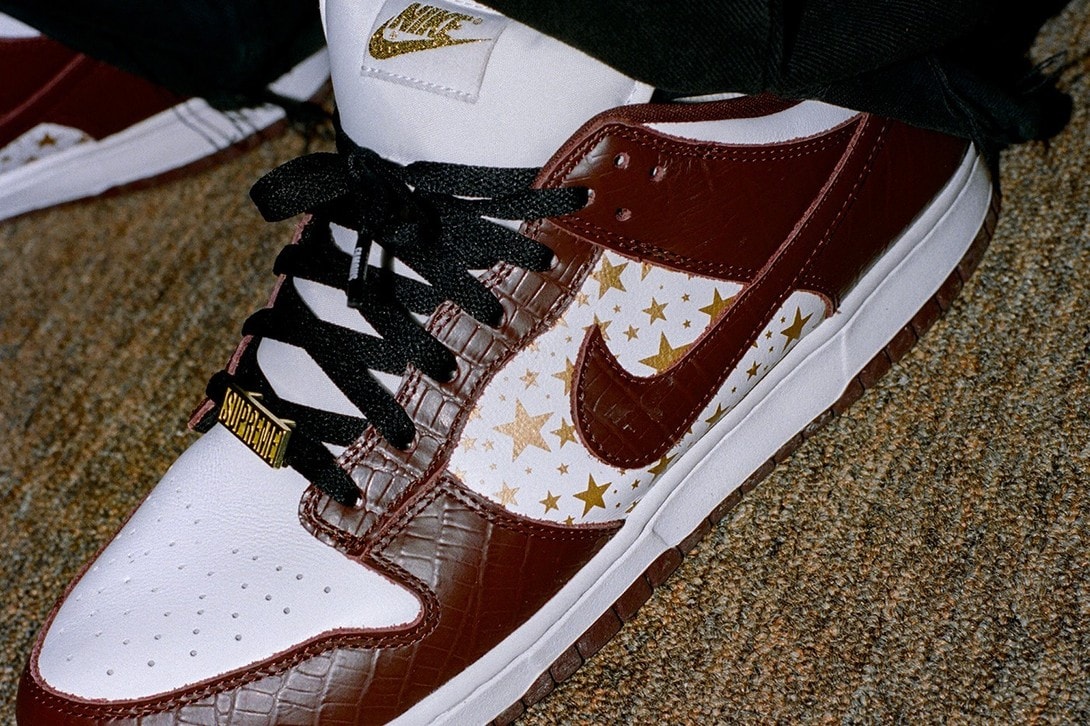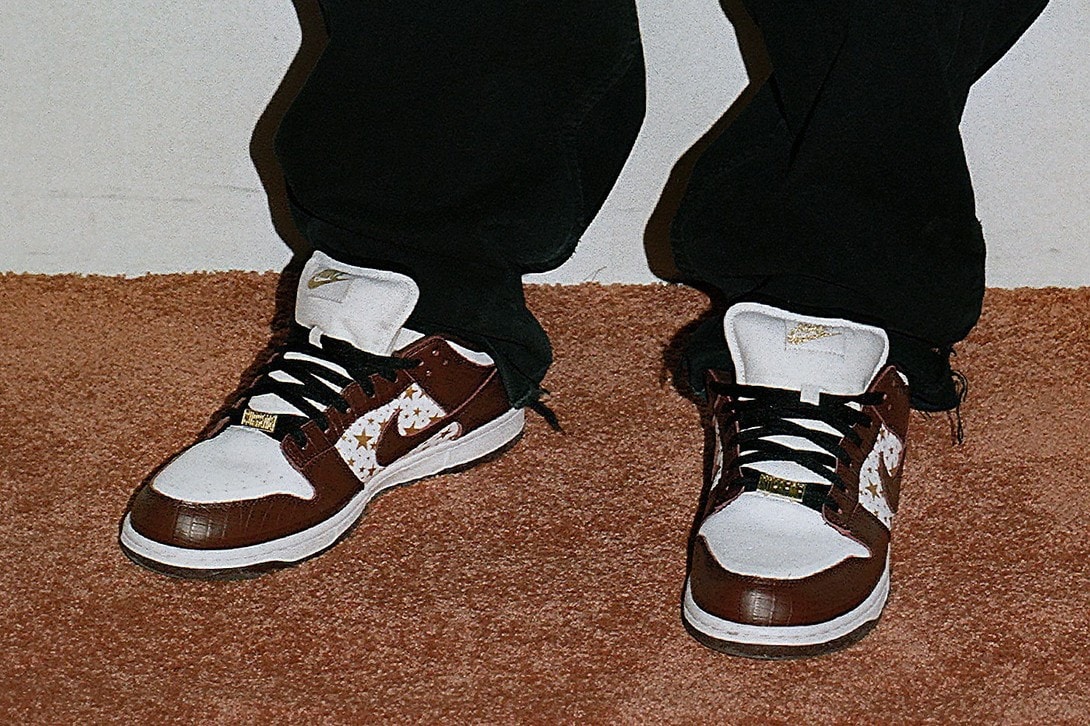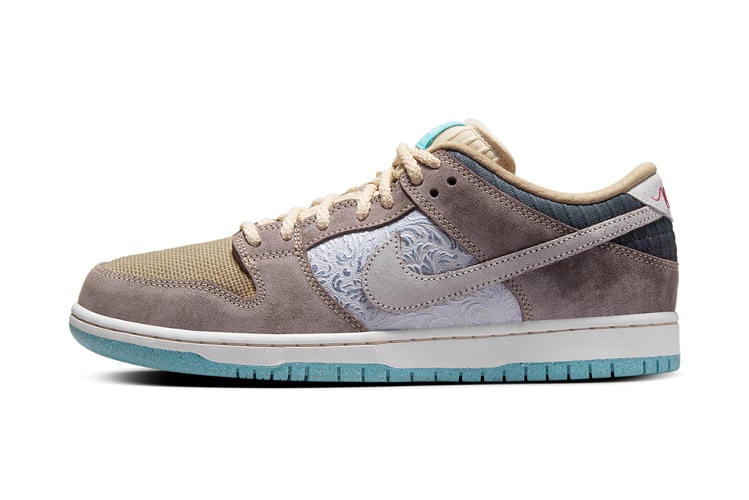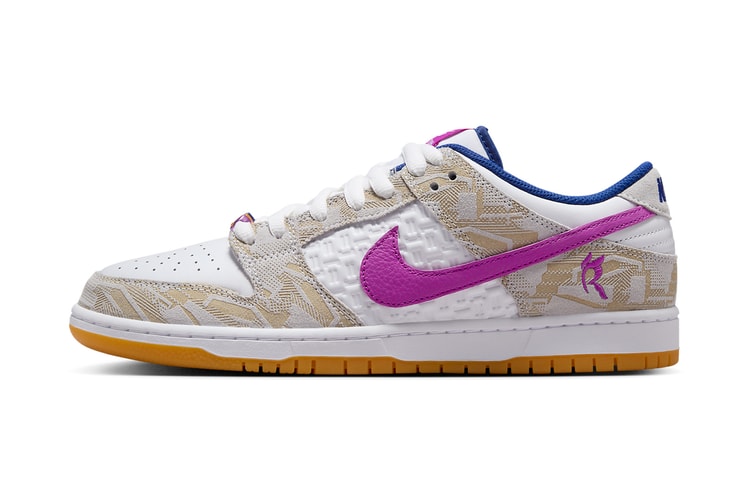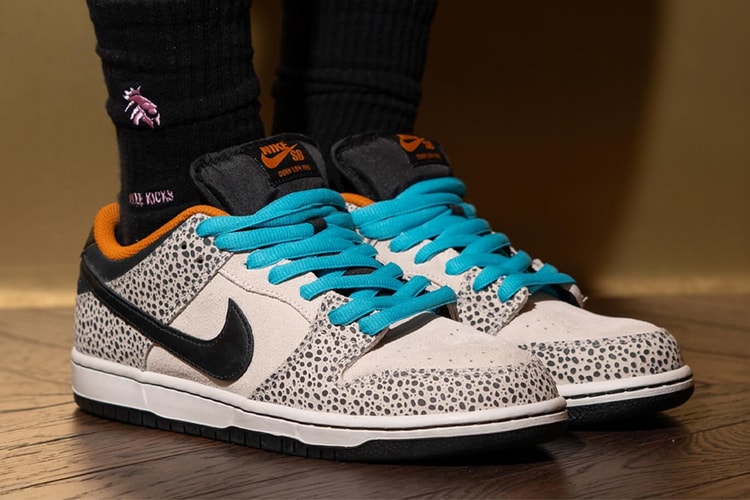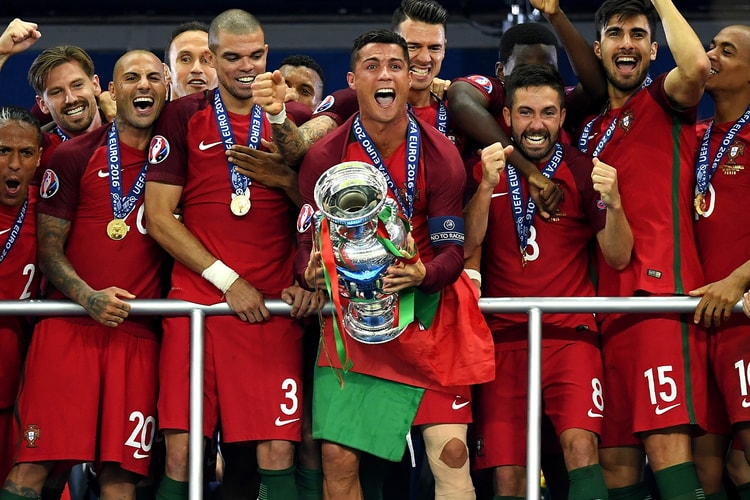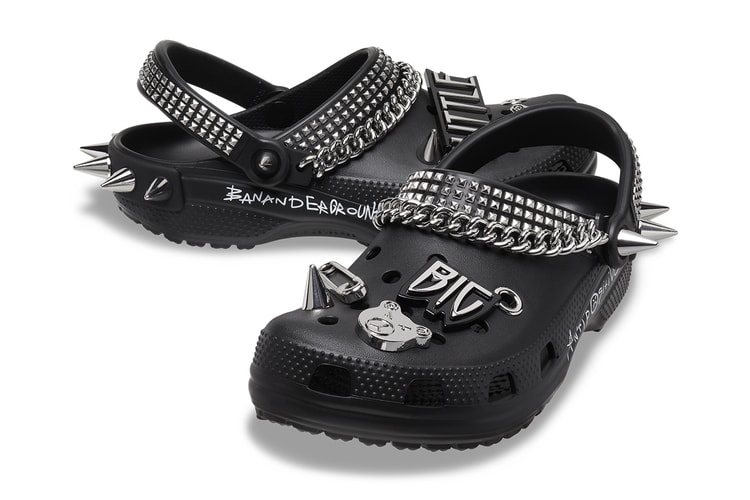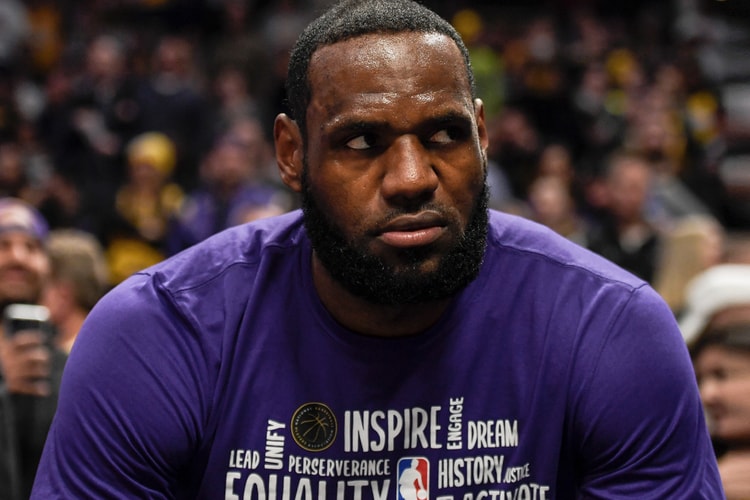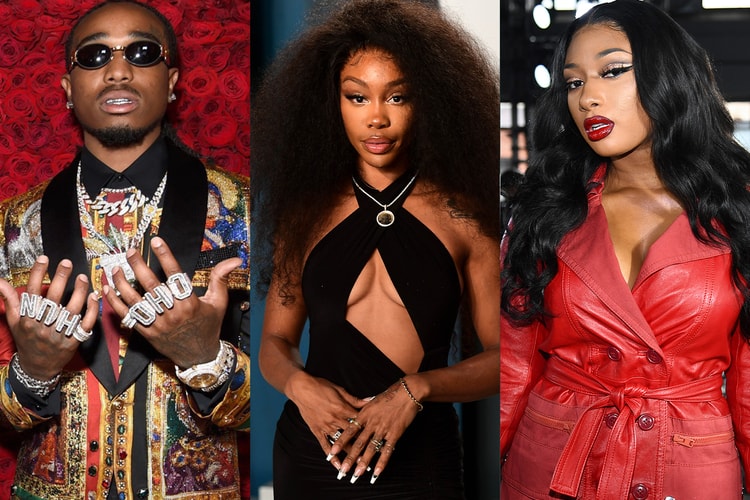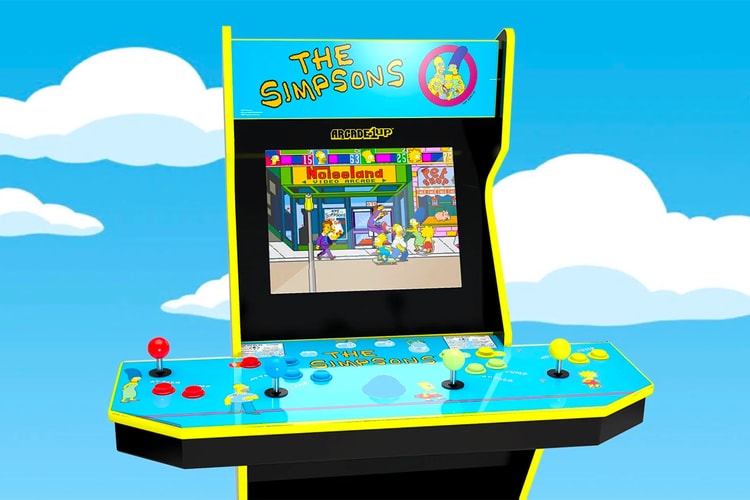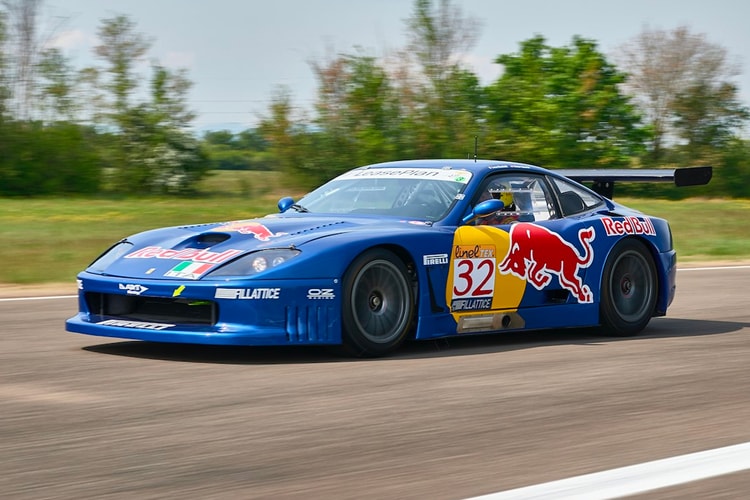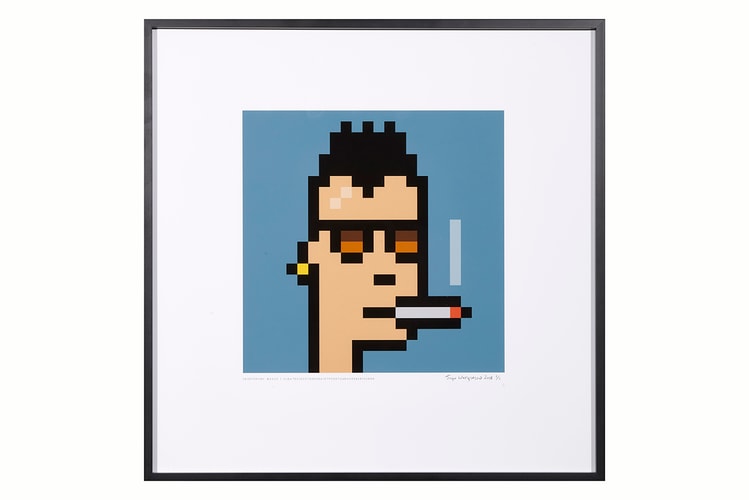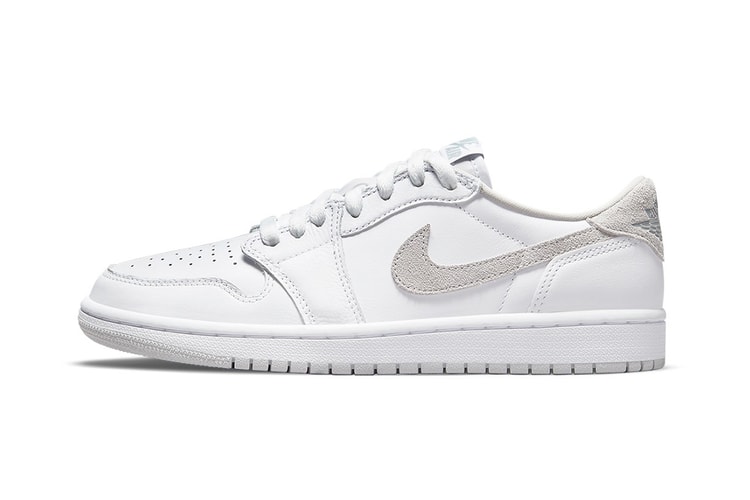The History of the Nike Dunk and the Nike SB Dunk
A comprehensive breakdown of one of Nike’s most coveted sneaker silhouettes.
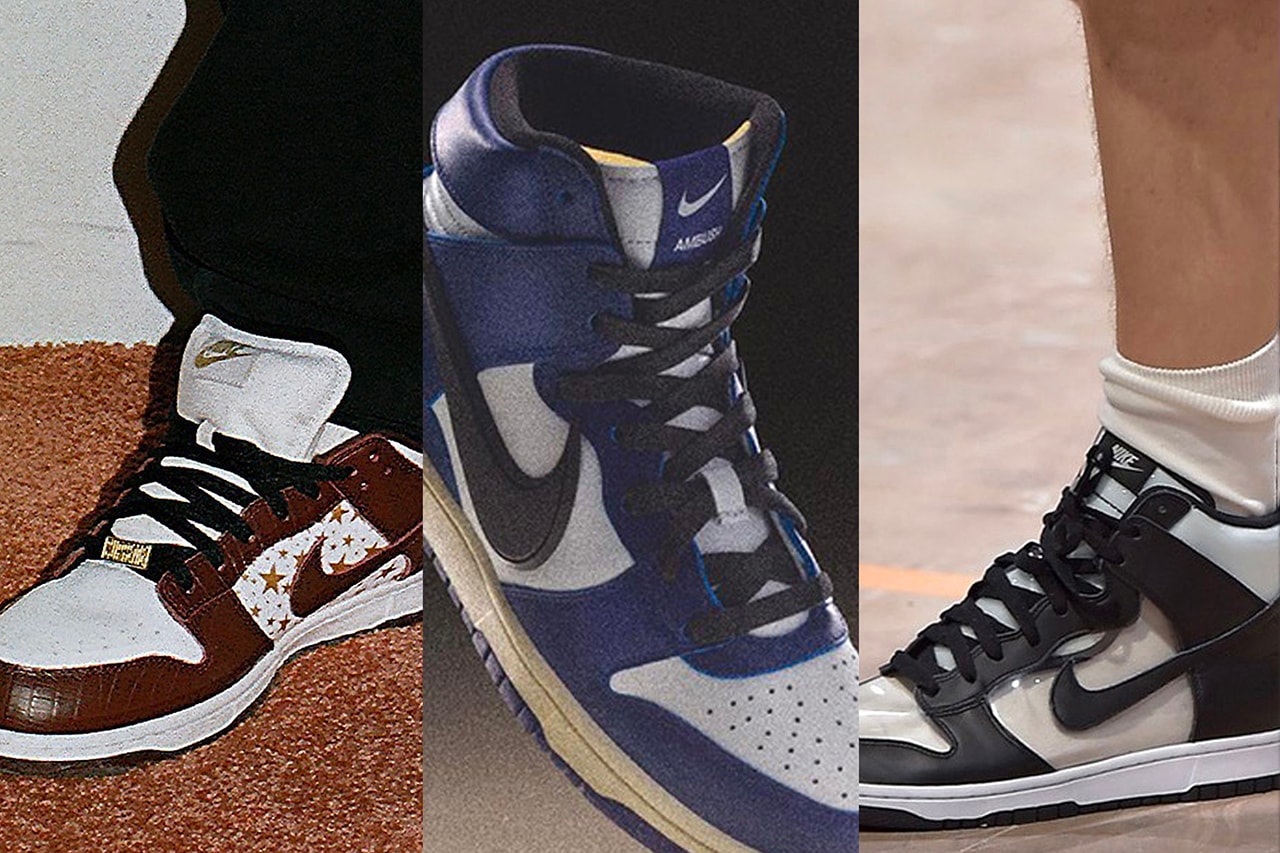
You are reading your free article for this month.
Members-only
A simplistic design, a balanced color-blocking, extreme versatility in its shape and style – the Nike Dunk is one of the most collectible silhouettes on the market today. Basketball shoe turned skateboarding staple, the Dunk has enjoyed a full-force revival in the year 2020 and 2021, surpassing its original purpose as a college hoop sneaker by a long shot. Yet, one thing has remained the same: the Dunk’s incredible ability to unify art, fashion, music and popular culture into one seamless whole, consistently acting as a shoe for several subcultures worldwide.
The Dunk’s history is not linear, instead branching out into several smaller stories. This has made its tale incredibly rich. A large puzzle piece in its unusual evolution is the partitioning of the Nike Dunk and the Nike SB Dunk lines, two different trainers for two varying lifestyles. To the casual wearer, the small tweaks to the SB’s design meant very little. To the skateboarder, it was everything. While this can naturally make it difficult to tackle both the Nike Dunk and Nike SB Dunk in one cohesive story, it’s important that the two stories are woven together, along with the addition of the Nike Dunk Pro B and Nike Dunk CO.JP models. The four trajectories are anything but mutually exclusive.
Firmly recognized for its performance and street style today, the Nike Dunk and Nike SB Dunk has taken advantage of its own cachet and made an enormous resurgence in the contemporary day. A report from StockX had revealed that Nike’s SB Dunk became the new silhouette to break resale records on the marketplace in 2020, with its value increasing by more than 300%. Even the mainline, non-collaborative pairs are selling out instantly, regardless of whether they’re High or Low, Nike or Nike SB. In today’s limelight, each and every Nike Dunk iteration is a pot of gold.
We’re taking a deep dive into the silhouette, and are celebrating the sneakers’ 35-year history, exploring its complicated and colorful timeline, the reason for the silhouettes resurgence, the individuals that helped position the Dunk as an icon of skate, streetwear, creativity and one-of-a-kind designs, and of course, the Dunk’s impact on sneaker history and sneaker culture as a whole.
Where it All Began
The Nike Dunk High was released in August 1985 as a high-top basketball sneaker, having been crafted out of four earlier Nike models – the Air Force 1, the Terminator, the Air Jordan 1 and the Legend. The AF-1 inspired the Dunk’s overall look – the outsole borrowing the same traction as the AF-1 – the upper was a merging of the AJ-1 and the Terminator, and the Legend was used to help create the moulds for the Dunk. The Nike Dunk’s predecessors helped form the silhouette’s final shape, but the backstory behind the sneaker’s very first release was what gave it its unique charm.
The shoe’s 1985 release coincided – and not coincidentally – with the golden age of basketball and its spotlit star, Michael Jordan. Being designed to accommodate basketball tactics and moves such as pivoting and blocking, the Nike Dunk became an instant success within the sport upon release – on its technical parameters that is. Truly, the 1985 Nike Dunk High became famous for something a little bit more colourful and symbolic than this, dubbed “Be True To Your School”.
“Be True To Your School” was Nike’s first attempt at marketing the Nike Dunk. It offered Division I college basketball teams and their respective fans a way to don their team’s colors. Each Dunk iteration focused on a specific colour treatment for respective teams, with the Swoosh having previously struck deals with the University of Iowa, University of Kentucky, University of Michigan, Georgetown, St. John’s, UNLV and Syracuse to confirm the Dunk High as their teams official shoe.
This was a clever tactic, allowing Nike to organically market the Dunk on and beyond the confines of college arenas – championing a non-competitive approach to sport as well as school loyalties – and help the brand reap the benefits of the collegiate basketball leagues’ growing popularity. Team mentality turned sneaker mentality, genius. The endless colorways approach of the ‘BTTYS’ series would also go on to become a defining trademark of the silhouette, unknown at the time.
The original Nike Dunk High soon became old news in the world of basketball, what with the Air Jordan 1’s fantastic success and other technological innovations, yet the silhouette continued on to make rounds with a more casual and unassuming market, a market that actually wanted little to do with Nike at the time. Introducing the NY kids, skating around, minding their own business, just having fun.
Skate Culture in the 1990s
The decade that followed the Dunk High’s first release saw the sneaker go through some subtle and yet integral changes. A nylon tongue for the reduction of weight, a shorter shaft and a thicker swoosh helped the sneaker thud shoulders with the world of skateboarding, something that Nike itself was blissfully unaware of at the time. The brand was failing to comprehend the Dunk’s growing affiliation with skate culture along with these design changes and was instead intentionally putting out some laughable sneaker silhouettes to appeal to this exact same scene.
The Swoosh’s very first attempt at winning over skateboarders came in 1997 and was, in straight-forward terms, pretty dire. Pre-Dunk came the Choad, the Snack and the Schimp, designs that were a bit too on-the-nose, coming with accompanying names that sounded like forms of onomatopoeia. It also launched a series of cheesy ads featuring a young Bam Margera called “What If We Treated All Athletes Like Skateboarders”. The message was ignored, the shoes mocked, and the market itself was already strongly in favour of footwear companies such as eS Footwear, Globe, DC and Vans.
Skate culture was becoming a growing scene and Nike wanted in. The problem was that those cruising on their boards identified Nike as another large corporation attempting to enter their world. The community was protective of itself and saw the brand as straight-up soulless. Nike wasn’t looking to the subculture, to those actually skateboarding and pioneering the scene. Commercial success and market ownership was Nike’s motivation. The Choad, the Snack, and the Schimp were forced attempts by the brand.
Back outside of Nike’s main point of vision was the Nike Dunk with its mid-life design tweaks, being adopted organically and lovingly by that same skateboarding consumer. This kicked off the real skateboarding beginning for the Swoosh, a beginning that was only natural because ultimately, as stated by a Nike spokesperson, “the shoe was perfect for skating”.
Skaters gravitated to the Nike Dunks once they’d fallen out of favor elsewhere. By the early 1990s, the Dunks were being sold at discount stores and neglected in dusty attics. This allowed the model to take on a life of its own, finding a new home within the New York skate scene.
Skateboarders loved the Nike Dunk because it was cheap and accessible, and offered the cushioning, support and traction needed for the sport. They were appropriated because of their durability, cup-sole shape and general construction. They were also easily styled, a big pro for the community that was as interested in the sport as it was in the fit accompanying it.
Towards the turn of the decade, Nike’s solution to its skateboarding problem became crystal clear. It was under its nose the whole time. Skating was beginning to gain in popularity and importance, and was now influencing the sales figures of the sneaker industry, especially the figures of the Nike Dunk. In 1998, the brand revamped the Dunk High and reissued it in original and familiar colorways. The design nuances helped push the growing trend forward, but it wasn’t until 2001 when Sandy Bodecker was appointed the general manager of Nike SB that the model successfully infiltrated the industry.
In 1999, prior to Bodecker’s time at Nike and the creation of the Nike SB subdivision, the Dunk Low Pro B and Dunk Low CO.JP (the domain name for Nike Japan) models were beginning to emerge on the West Coast and in Japan. These Dunks were the product of regional experimentation, each iteration developed pushing the boundaries of materials, textures, colors and design. Crazy colors paired with crazy fabrics, the Pro B naturally lent to the world of skateboarding, merging creativity and customization into one.
The Pro B was the first Dunk to incorporate the padded mesh ‘fat’ tongue alongside elastic straps and extra padding. To the skateboarder as well as the sneaker collector, these changes had multiple benefits, whether for fit, aesthetic and performance. Momentum around the two silhouettes and their numerous renditions perfectly coincided with the rise of sneaker forums like NikeTalk.
At the time forum culture was giving birth to the spread of knowledge around regional and geographically-exclusively Dunks. Buying and trading Dunks across the internet suddenly became a reality, with CO.JP releases playing a part in this online frenzy. It’s believed that the CO.JP/Pro B models gave way to a pronounced sneakerhead mentality around the Nike Dunk in the early 2000s, expanding the reach of the silhouette globally.
When Sandy Bodecker, Nike’s Vice President of Special Projects at the time, came across the Pro B, an opportunity presented itself. Could this be the future of Nike and skateboarding, could there be something here? Bodecker and Nike created a new sample Pro B and showed it to skate shop owners, trailing the concept of an SB Dunk sold exclusively in their stores. The whole exercise was a sort of focus group, a way to get feedback on Nike’s existing position in the skateboarding scene and knowledge around what more could be done. Finally, Nike was beginning to understand the culture it was trying to tap into.
The 2000s: A New Era for Dunk
The greatest era in the history of the Nike Dunk came with the appointment of Sandy Bodecker as General Manager of Nike SB in 2001, along with the subdivision’s official launch in March 2002. He was tasked with revamping the brand’s ailing approach to the skating industry, having previously played an integral role in improving and growing Nike’s soccer division.
After a period of real-life trialing and testing, Mr. Bodecker and Nike founded the SB division and lo and behold, the Dunk Low Pro SB went into manufacturing. There was no real need to create a completely new shoe because Nike was already producing what the community needed – “skaters wanted it so it would have been very difficult for Nike Skateboarding to launch with a different shoe in 2002”, mentioned our Nike spokesperson. What the brand could do was update the Nike Dunk silhouette with subtle tweaks, catering more specifically to the demographic they were intended for.
And so Nike re-engineered the Dunk, creating a version for skaters that not only accommodated their sport in design but acknowledged the entire culture that they were a part of. “The differences between the regular Nike Dunk and the Dunk Low Pro SB are several,” commented our Nike spokesperson, “and that doesn’t even get into the various factory changes that have happened during the last 18 years of the SB Dunk franchise”.
When it launched in 2002, the Dunk Low Pro SB also incorporated the fat tongue and elastic straps of the Dunk Low Pro B, a new sockliner (skaters that were sponsored by other brands were inserting the Dunk’s sockliner into their shoes already), a Poron foam bed and a Zoom Air Unit in the heel. Structurally, the model was crafted with extra comfort and safety in mind. The flat tongue was introduced – a common feature of skating shoes – the sole was modified to increase braking traction on grip tape, the insole was reinforced with extra padding, and cushioning was added to support the impact of the sport.
This new Dunk, as well as being technologically supreme at the time, also retained a certain aesthetic appeal, combining the skating shoe with the regular lifestyle sneaker. This was their discerning appeal in a market full of conventional skating shoes, a move away from the big, bulky and non-casual sneaker look of the early 2000s. The revamped look meant that skaters no longer had to carry an extra pair of shoes in their bags to swap into after skating, instead rocking the same SB Dunks throughout the day.
The Dunk Low Pro SB dropped in partnership with and inspired by Nike’s skate ambassadors. In an effort to establish itself firmly within the culture in a credible manner, Nike signed its first SB skate team, consisting of Danny Supa, Gino Ianucci, Richard Mulder and Reese Forbes, and dropped four signature SB colorways, each sneaker featuring nods to the associated pro skater.
The collection was dubbed the “Colors By” series and included the Gino Ianucci Long Island New York Dunk, the Richard Mulder Los Angeles Dunk, the Reese Forbes Wheat Dunk and the Danny Supa Los Angeles Dunk. Skaters and sneakerheads were willing to queue for days to get their hands on a pair from the release. It was clear that this was the beginning of a long and successful run for the Nike SB Dunk, now legitimized and greenlit by the skateboarding community.
Development and Changes
The silhouette went through further structural changes throughout this era. In 2006, Nike introduced the Dunk Mid Pro. “This was a major update because up to this point, Nike hadn’t done a Mid version of the shoe, just a Low and High,” commented our Nike spokesperson, and “in addition to the new height, the Mid also included a Velcro ankle strap”. The other big change was the ‘stitch and turn’ overlay construction on the toe of the shoe, “done to increase overall durability in the area most affected when doing flip tricks. This construction was later incorporated into all the versions of the SB Dunk”.
Another notable change that occurred throughout the SB Dunk’s history was the box, often dubbed as the silhouette’s ‘box color eras’, introduced “in order to keep things fun and interesting”. Many people refer to the different eras of the SB Dunk just by the color and design of the box, allowing the community to nickname each shoe, trace the timeline and development of the subdivision and differentiate between the SB and general releases. This also added to the collector culture around the shoe, with sneaker enthusiasts preserving their shoes in their original boxes when a potential trade was on the cards.
Collaborations Are Key for Success
Starting how they meant to go on, collaborations became an enormous part of the appeal of the Nike SB Dunk (not an industry standard at the time). After the “Colors By” release, Nike enlisted several high-profile and diverse names and brands, each collaboration adventurous and unlike anything that the brand had been doing prior. Some notable collaborations from the early 2000s period include those with the likes of Futura, Supreme, Chocolate, Zoo York, Slam City Skates, Levi’s, Stussy, MF Doom, Jeff Staple, Diamond Supply, Concepts and many others. These releases were arguably responsible for igniting the sneaker resale market and camp-out culture, as well as boosting international sales on consumer websites such as eBay.
Each sneaker release came with a rich story and was relatable to a branch of the community. There was something for everyone, a weighty plethora of Dunk options coming in all colors, materials and patterns. Dunks colorways coined “Jedi”, “Hulk”, “Heineken”, “Hemp”, “Shark”, “Reverse Shark” and many more donned stories relating to pop culture, big-name personalities and the repurposing of materials. When SB partnered with Supreme in 2005, this was the first time that a non-Jordan sneaker featured the elephant print.
It was a period of endless lines, hysteria and hype, and in the case of the Jeff Staple x Dunk Low Pro SB ‘Pigeon’ dropped 2005, riots and police intervention. The drop made headlines and the CBS Evening News. Though mainline Dunks lost their appeal with the consumer throughout the ‘00s, the excitement and sheer force of draw power of the Nike SB Dunk made it one of the most collectible silhouettes ever to exist, a complete cultural phenomenon at that point in time.
It wasn’t just the collaborators that acted as a catalyst for the Nike Dunk SB’s wild success. The cleverly planned and tactical distribution technique of the silhouette across the US was the other key player.
While the alterations to the Nike SB Pro in 2004 were minimal at most, the two-fold factor of heat collaborations and a tightly controlled distribution strategy made the Dunk sell out consistently and without fail. New models were only launched in skate shops, each hand-picked by the SB team for their authentic and credible presence within the skate scene and amongst skaters.
Skaters, having already disregarded Nike previously for attempting to forge their way into their community for commercial purposes, were not on the lookout for a mass-produced sneaker sold in every sports shop available. Instead, Nike made a commitment to keep each Dunk release limited, sold exclusively at a premium network of independent skate stores and winning over the demographic entirely overnight.
If the skate shop owners, the gatekeepers so to speak, were stocking this shoe, then there must be something in it. This was the mentality. And due to their limited availability and the spaces in which they were sold, skaters were the first to get their hands on new SB Dunk pairs, going on to actually skate them amongst their peers and use them for what they were made for. This was an easy marketing and credibility win for Nike, an important factor for the Nike SB Dunk’s success.
What this credibility win also did was bring a new customer to the Nike SB Dunk release day queue: sneakerheads, those with no affiliation to the skating scene, and naturally jarring to the skaters who wanted to call the shoe their own. And as with everything, the larger the demand, the larger the supply, the bigger the flood in the market and the quicker the Dunk would fade into the background, superseded by newer silhouettes that followed a similar formula of hype and yet now sidelined minimalism for something a little more experimental.
The End of an Era
By the end of the decade, lethargy for the skate shoe had set in and the silhouette was in for a long dry patch before things picked up again. The early 2010s saw newer Nike SB Dunks kicking it across outer-city Nike outlets and general releases would be on sale at the mainstream retailers.
Pairs that would years before rack up a hefty resale price were, in 2015, worth less than their retail value. This was a real slump for the model. Nike SB Dunk ‘grails’ were sitting quietly amongst skateboarders’ and sneakerheads’ collections, no longer a part of the conversation. Those that managed to keep ahold of their pairs would later reap the benefits of this – unbeknown to them at the time – but it would be a few years before the reemerging frenzy kicked into play.
What helped this silhouette enormously in its revival from the dead was that all across its timeline, from birth to its saturation in the market, Nike never steered the shoe away from credible sources, references and collaborators. The brand was still partnering with key players from the skateboarding scene, ignoring mainstream celebrities and brands in the process. The SB Dunk had earned and maintained its respect across a wide span of audiences – skate and non-skate alike – and it was time for it to grow on its pop-culture status in as tactful a way as it had back in 2004.
The Return of Dunk
Around mid-2010, both mainline Nike Dunks and collaborative SB pairs were beginning to gain momentum. In 2015 Nike dropped a re-release of colorways from the “Be True to Your School Pack” to celebrate the sneaker’s big 30th anniversary. The Dunks were not the miraculous catalyst for the comeback of the model, but they did a good job of setting the foundation for what was yet to come.
That same year Nike and Dover Street Market partnered up to release the DSM Dunk Lux High, with two iterations – a solid black and a white pair – hitting the market in May. DSM branding sat atop the tongue whilst the entire silhouette boasted a minimal yet sleek look, highlighting the collaborative efforts of both brands simultaneously.
The year 2016 saw the Dunk hit the runway. Rei Kawakubo’s CDG Homme Plus Nike Dunk High rendition, a black/white/teal look with transparent vamp panels, was a turning point for the silhouette, for the first time attracting a demographic that was very fashion and little skate. A new world has opened up for the Dunk.
As We Know it Today
But no prior release would have had the impact on the Dunk’s future than when Travis Scott was given the go-ahead to rework and get freaky with the SB Dunk Low. Something of the sort was looming in the air – Kylie Jenner was seen donning exclusive and highly coveted pairs of the model across her Instagram channel and Scott was known to be a self-proclaimed Dunk fan.
When the Travis Scott x Nike SB Dunk Low Cactus Jack hit the market in February 2020, coming with removable paisley and plaid print overlays, shoe hysteria took hold of the model. It’s seen as one of the hardest cops of the year, with a painful amount of Ls taken worldwide. Travis Scott brought a new life to the Dunk, and more importantly, to a new generation.
The Swoosh continued creating the hype when they enlisted Virgil Abloh to try his hand at the silhouette. In 2019, the Nike x Off-White™ Dunk Low dropped in three vivid and dynamically-blocked colorways; at the time Virgil Abloh’s Nike collaborations were the biggest topic in the world of sneakers. The SB Dunk was of course a natural contender for joining the Off-White™ rehashed roster.
Those that couldn’t get their hands on these new releases swiftly turned to scour the market for OG Dunks as well as mainline and retro SB pairs that were released in the early- and mid- 2010s. Vintage Dunks soured in value. The concept of an SB Dunk or Dunk on sale or seen sitting on shelves was no more.
Today, grabbing a pair of Nike Dunks or Nike SB Dunks for retail is a serious mission. Over the past year and a bit, a younger generation has welcomed the Swoosh silhouette with open arms, desperately clawing at raffle releases and 8am BST drops on Nike SNKRS. Saskia from MAHA Amsterdam commented on the shoe’s contemporary revival: “I think that the return of the Dunk, with that proper push and the collaborations, was a great introduction for the younger and newer consumer”. On the basis of trends, the SB Dunks’ bulkier design is also lending to the feeling of nostalgia that we’re currently experiencing right now in the world of fashion, an additional factor to throw into the mix.
There are countless notable releases from 2020 and 2021 so far, the numbers growing by dozens every few months and each and every pairing reselling for somewhat uncomfortable prices compared to their retail counterparts. To name a few bold releases from the previous year, we had the Nike SB Dunk Low Ben & Jerry’s Chunky Dunky, the Nike SB Dunk Low Grateful Dead, the ‘Kentucky’ blue and ‘Syracuse’ orange ‘Be True to Your School’ Nike Dunks, the AMBUSH x Nike Dunk Highs, Cactus Plant Flea Market’s glitzy take on the Nike Dunk Low in two colorways, the Dunk Low Ugly Duckling’ pack, the SB Dunk Low Medicom Toy, the SB Dunk Low ACG Terra, the SB Dunk Low Strangelove, and many, many more.
2021 came around and dropped some retro, mainline colorways, as in the center of the kicks conversation as their more ‘hyped’ collaborative equivalents this year. Here’s a healthy list: SB Dunk Low Street Hawker, SB Dunk Low Supreme Stars, Dunk Low Retro White Black, Dunk Low Retro Varsity Red UNLV, Dunk Low SP City Market Dunk Low Medium Curry, AMBUSH x Dunk High Deep Royal Blue, Dunk Low Lemon Drop, SB Dunk Low “What the Paul” and once again, many, many more. More than a dozen others are expected to drop this year.
The Future of the Dunk
And what can we expect from Nike when it comes to Dunks in women’s sizing? Too often the best renditions of the silhouette aren’t inclusive of female consumers. We asked Saskia what looks and collaborations she would like to see from the model: “I would like to see more unisex executions. Most of the time I’m not a fan of women’s exclusives, the chance of a girly twist happens too often. What I would love to see is a Dunk SB ‘Dogwalker’ P2, I love the concept”.
Stine from NAKED Copenhagen responded by saying “I’m super excited about the Dunk revival in general, and anything re-released is always great to see, especially in women’s sizing for those of us who appreciate the takedowns”. And with Nike working with partners like Tokyo-based AMBUSH, a brand bringing the Dunk into a new space and offering more inclusive sizing than ever before, we’re hopeful that the upcoming additions to the Dunk roster will be all for one, and one for all.
The Nike Dunk and SB Dunk is a pioneer of thoughtful storytelling. Every color palette and material picked out by the Swoosh design team and the respective collaborators have had a deep-set rooting in something, whether that be personal, cultural, sport- or fashion-related. The Dunk showed how impactful collaboration between big ‘corporate’ brands and small authentic collectives and individuals – those close to the subculture – can be.
The silhouette has gone through a whirlwind of evolution since its introduction in 1985, dividing into two different lines of trainers, one specifically aimed at those cruising on their boards and the other for a more general consumer. And while the 2000s were rightfully dubbed the golden era of the Dunks, laying the foundations for contemporary sneaker and streetwear culture, the Dunk’s evolution into the present day has come to mean something entirely different to a budding new generation – and yet, entirely the same?
As was in 2005, the Dunk today is highly coveted, surged in price, a cultural commodity, status symbol, work of art, and one of the most iconic models created by Nike. It comes with an archive that few brands, let alone sneaker models, can come into competition with. An entire full circle has come into swing, this time around boasting a lengthier timeline of heritage, an eclectic and wide-span mix of celebrity endorsements, and an even tighter bonding of streetwear, sneakerhead and skateboarding culture. It’s clear that “the broad range of current collaborators,” commented our Nike spokesperson, “inclusive of Virgil Abloh, Yoon Ahn, Bodega and even Ben and Jerry’s, speak to the enduring power of the Dunk within the cultural sneaker space”.
The Dunk is now an entirely universal silhouette, owned by no one (literally) and everyone (unfortunately not literally) at the same time. Long live the Dunk, may you persevere many years more.

